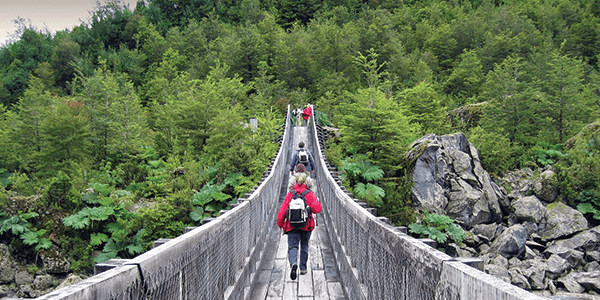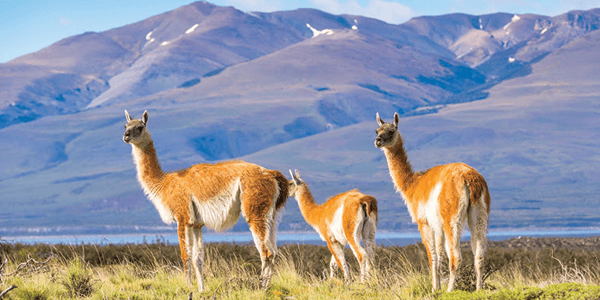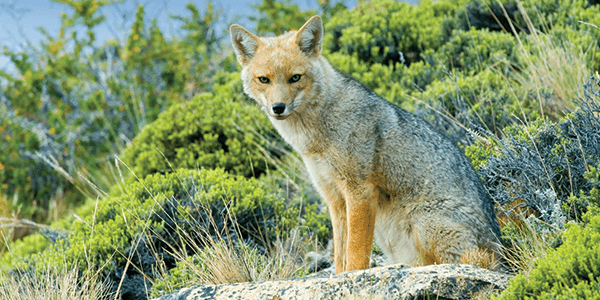May 23, 2019
|Last updated on March 24th, 2021 at 11:27 am
Planning a Trip to Patagonia
Have you ever wondered how to plan a trip to Patagonia? Patagonia encompasses the vast southernmost tip of South America, shared by Argentina and Chile, with the Andes Mountains as its dividing line. The Argentine side features arid steppes, grasslands, and deserts, while the Chilean boasts glacial fjords and temperate rainforest. Visiting this beautiful region is a fantastic idea. Patagonia offers incredible landscapes, glaciers, hikes, and cuisine. However, planning a trip to Patagonia can be stressful sometimes. Though there is a lot of information online, not all of it is reliable.
As an expert Travel Consultant, I receive many questions about Patagonia trip planning due to it’s difficult to figure out logistics and distances between destinations. It’s not easy for the traveler to figure out alone when to embark on a Patagonia tour and what to do while there. Therefore, I would like to share some tips that will help with your Patagonia trip planning.
1. Plan Your Trip to Patagonia In Advance
First on our list of tips for Patagonia trip planning is to book in advance. Patagonia is one of the most visited destinations in South America. Especially between mid-November and late March, which are the best times to visit Patagonia. Generally, within these months, you can travel with ideal weather conditions, and enjoy the lakes and rivers. Since the season is relatively short, it is imperative to start planning in advance. Especially if you’re planning on seeing remote destinations where resources are limited like Torres Del Paine National Park.
Chances of finding accommodation inside the National Park turns into a worldwide competition as November (peak season) approaches. International travelers begin to reserve the remaining available space in the Patagonia lodges and cruises. That’s why I recommend starting to plan your Patagonia trip far in advance so that you can secure the type of accommodations you prefer without any hassle!
2. Decide How You’d Like to Explore Patagonia
Choosing to visit Patagonia is easy; choosing how to visit Patagonia can be a bit more tricky. Consider the benefits of a Patagonia cruise vs. a Patagonia land package. Land packages are a fantastic option for the adventurous traveler. During a land package trip, travelers can hike all day in one of the national parks, and then return to the comfort of their lodge for the evening.

Patagonia cruises are a wonderful option if you want to explore the depths of the region without having to necessarily put in the physical effort. Most Patagonia cruises leave from Ushuaia or Punta Arenas and take you to Cape Horn, through icy fjords, and past massive glaciers. It is important to decide how you would like to explore Patagonia before booking your trip – however, no matter what you choose, it is sure to be a memorable experience!

3. Get Help with Patagonia Trip Planning Logistics
Third on our list of Patagonia trip planning tips is to understand the logistics. It’s important to know that Patagonia is shared between Chile and Argentina. Many people often start marking destinations in Patagonia without realizing that these destinations are in two different countries. For that reason, you may have to cross the border multiple times during your trip and that is where traveling to Patagonia can get complicated. There are not many international flights between Chile and Argentina unless you are traveling from Buenos Aires or Santiago de Chile.
Therefore, land transfers (private transfers, shuttles, and buses) are recommended. Though, land transfers can be longer than most imagine, once you consider road conditions, border crossing, and scenic stops on the way.
For that reason, I strongly encourage contacting an expert Travel Consultant who can arrange all the logistics of your Patagonia trip for you. That way you don’t need to worry about figuring out all the complicated tasks of traveling from Argentine Patagonia to Chilean Patagonia and vice versa. With a trusted Travel Expert, you’ll have all the information and help you need to plan a seamless Patagonia tour.
4. Keep Your Itinerary Flexible
There are many reasons to plan a flexible trip to Patagonia. First of all, Patagonia is all about nature. Everywhere you look, the landscapes and wildlife will amaze you. To fully enjoy the beauties of nature, it’s imperative that you are not rushing from one place to another.

Second, many people travel a long way to visit Patagonia and want to experience as much as possible. However, you don’t want to have too tight of a schedule. For example, you need time on your side when you’re combining a Patagonian cruise with a stay at a Patagonia lodge. I recommend being at the destination in Patagonia for your cruise departure, a day before actually departing. That way, you’ll have no chance of missing your cruise (which can happen if you schedule flights the same day).
5. Bring Some Cash With You to Patagonia
It’s important to know about money in Patagonia. Many hotels and restaurants will accept credit or debit cards. However, it is advised to have some cash with you as well just in case. Some small local businesses, souvenir shops, and kiosks may not accept credit or debit cards. In some destinations in Patagonia, it can be hard to find an ATM. Or even if you find ATM, it can be out of cash. It is better to take out some cash in the big cities beforehand. Find more of these Patagonia travel tips from our downloadable Essential Patagonia Ebook.
6. Pack Wisely for Patagonia Weather Conditions
As I mentioned before, the weather in Patagonia can be tricky, so your packing list for Patagonia is important. My Recommended Packing list for Patagonia:
- A light rain jacket (especially if you are traveling between November to March or else a heavy coat)
- Sunscreen
- A hat
- Sturdy walking shoes
- A small bag for carrying essentials such as a water bottle or snacks
- A warm, small hoodie
- Swimwear
The last bullet point (swimwear) might shock you. Even if you are traveling during Patagonia’s winter, don’t forget to bring your swimwear. Patagonia has very nice cozy hotels that offer heated indoor pools and spas. And, of course, in the summertime, you can enjoy the lake and its beaches.
7. Respect the Nature in Patagonia
Patagonia offers beautiful national parks, forests, lakes, ocean, and mountains which are home to many species. It is our duty to protect them and create a sustainable environment for our friends.

Listen to your guides and don’t forget to read the warnings at the entrance of the treks. Some simple rules to remember are: do not make fires, do not leave your trash in the forest, and try to leave a minimum carbon footprint. That way, the Patagonia region can survive for many years, decades, and generations yet to come. Are you ready to start planning a stress-free trip to Patagonia? Check out our sample Patagonia tour itineraries or contact a Travel Consultant directly.
Mentioned in this article






